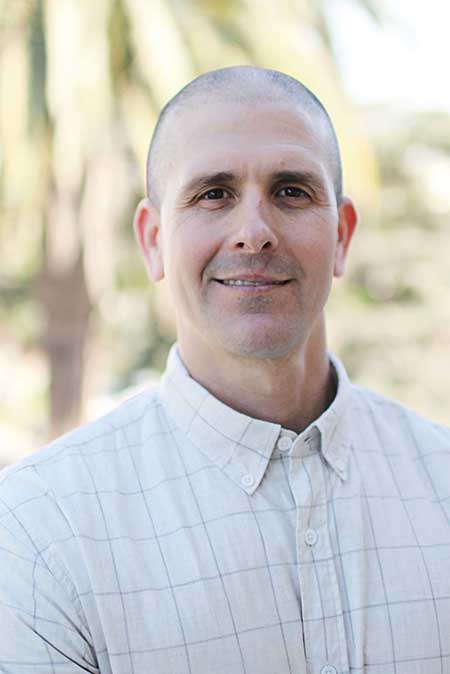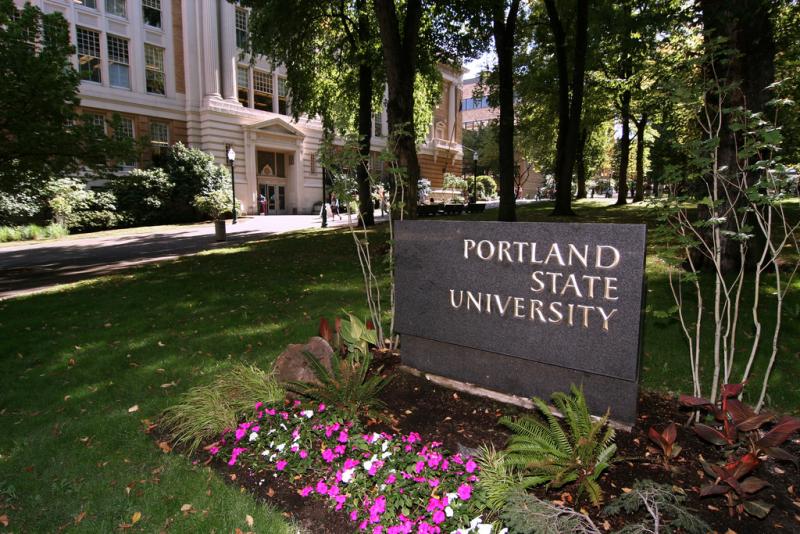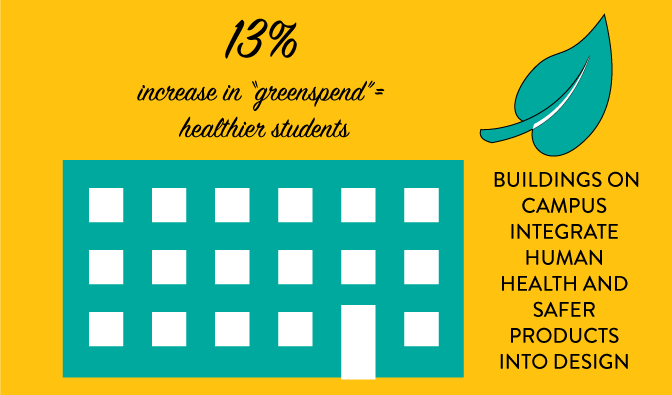Green Chemistry Model Sprouts
in Oregon – and Beyond
“Traditionally, purchasers of products focus on price, performance and availability, not on chemical ingredients. With an increasing number of policies, standards and consumer pressures, we’re making chemical ingredient safety part of performance to protect human and environmental health.” —Colin Price, Director of Market Innovation for Oregon Environmental Council
“Green chemistry” is the process of harnessing innovation during the research, design and manufacturing of products. Green chemistry builds on conventional chemistry by adding environmental, health and sustainability criteria to the mix.
Under the leadership of Colin Price, Director of Market Innovation for Oregon Environmental Council (OEC), a strategic and comprehensive blueprint called the Safer Products Innovation Strategy has emerged. Price says, “We’re making chemical ingredient safety part of performance and making it easier to identify and choose safer products.”
Price and his team are spearheading a growing movement for a green chemistry innovation infrastructure in Oregon and across the country. The effort is gaining momentum through coalition building, public policy, public procurement and consumer-facing awareness campaigns.
Under the leadership of Colin Price, Director of Market Innovation for Oregon Environmental Council (OEC), a strategic and comprehensive blueprint called the Safer Products Innovation Strategy has emerged. Price says, “We’re making chemical ingredient safety part of performance and making it easier to identify and choose safer products.”

COLIN PRICE – OREGON ENVIRONMENTAL COUNCIL
In collaboration with:
Safer States Coalition
Clean Water Action
Responsible Purchasing Network
Center for Environmental Health
A Cooperative Public Private Partnership Paves the Way
A strategic thinker, Price knew he’d need to knit together a coalition of progressive leaders to advance the concept on a larger scale.
So in 2009, he recruited some of Oregon’s most visionary, respected and successful companies, including Nike, Staples and Blount, along with key state agencies and universities. The coalition, dubbed the Oregon Green Chemistry Advisory Group, published a report in 2010 called Advancing Green Chemistry in Oregon. Their recommendations became the basis for removing barriers to the widespread adoption of sustainable chemistry in product design and manufacture.

In 2011, in conjunction with the Oregon Department of Environmental Quality, the group launched a policy campaign. The goal? To gain the support of high-profile state leaders, statewide agencies and the general public for the “safer products” cause.
They succeeded.
In 2012, the Governor of Oregon issued Executive Order (EO) 12-05 to foster safer product innovation through public procurement, awareness building, business incentives and interagency strategy development.
First-in-nation Policy Powers Competitive Green Purchasing
One of the key concepts in the Safer Products Innovation Strategy is that organizations have the power to protect people and the environment through their purchasing decisions.
By 2013, the team helped develop the nation’s first joint multistate price agreement with the State of Washington for green janitorial supplies and cleaning products. The following year, the OEC helped develop the nation’s first green chemistry procurement policy under the Oregon Department of Administrative services
Price and his team moved policy forward by listening to the barriers procurement professionals faced. He helped them identify new sources for green products and created administrative tools to simplify the process.
“We’ve proven that when you embed healthy building elements into standards, solicitations and contracts,” says Price, “you candrive market demand for safer, less toxic products.”
Additionally, he worked with Green Partner Support to audit green spending for competitive pricing.
“The green chemistry procurement policy was a necessary first step,” says Price, “Through procurement, we’re driving a sustainable manufacturing economy to meet the market demand for safer products through green chemistry innovation.”
“We’ve proven that when you embed healthy building elements into standards, solicitations and contracts,” says Price, “you can drive market demand for safer, less toxic products.”
Legislative Win Spurs Healthy Purchasing Resolution in Metropolitan Portland
It was critical that The Safer Products Innovation Strategy meet with success in Oregon’s most populous region.
Portland annually spends about $210 million dollars, two-thirds of that in the purchase of construction goods and services. As a result of the Price’s engagement with influencers in the architecture and green building community, the City of Portland and Multnomah County adopted the joint “Healthy Purchasing” resolution. This resolution protects people and ecosystems by fostering green chemistry innovation in the city and county.
With the joint policy resolution, Price saw an opportunity to build momentum by engaging other institutions in healthy purchasing. In a key strategic move, he formed The “Healthy Purchasing Coalition” made up of local governments, higher education institutions and ports in Oregon, California and British Columbia.
Municipalities Across the Nation are Buying Safer, Greener Products
Today, support for the Safer Products Innovation Strategy is growing nationwide.
After achieving success with public procurement work in Oregon, California and British Columbia, Price expanded the effort across the country by partnering with long-time partner and collaborator Safer States Coalition in 2015 to dramatically increase their impact in the marketplace.
Price’s team at OEC is one of eight states across the country that’s partnering to push for safer product policies and contract requirements at the state and local government level. OEC, Responsible Purchasing Network and the Center for Environmental Health support state partner organizations with outreach, research, policy development and technical support. The campaign is initially focused on the purchase of safer office furniture and building products by encouraging large, multistate cooperative contracts for these goods.
Price and his team are playing a vital role in creating a cleaner, greener economy through safer products.
Early on they realized that using consumer awareness campaigns to drive green chemistry innovation is smart public policy. Through careful planning and team building, the strategy is working. Price and his team are developing the infrastructure—the information and relationships—necessary to create large-scale change for safer products throughout the U.S.
“Finding like-minded strategic partners with complementary strengths dramatically increases our impact in the marketplace,” says Price. “We’re increasing the amount of money being spent for safer products and creating broader geographic reach.”
The RESULTS!

OEC is using the Safer Products Innovation Strategy to protect the health of school children in Oregon, while increasing demand for products and materials that are designed using green chemistry. One of OEC’s Healthy Purchasing Coalition members, Portland State University, integrated human health and safer products into their technical design standards. Now all new buildings and remodeled buildings on campus will be greener and more sustainable.
Learn more about the work of Oregon Environmental Council, and the Safer Products Innovation Strategy case study.
